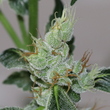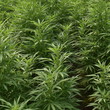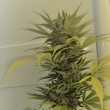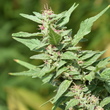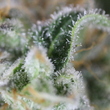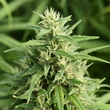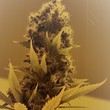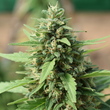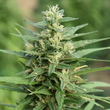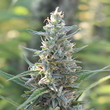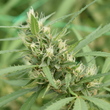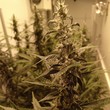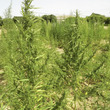Introduction
Cannabigerol (CBG) is one of the major phytocannabinoids present in Cannabis sativa L. that is attracting pharmacological interest because it is non-psychotropic and is abundant in some industrial hemp varieties. The aim of this work was to investigate in parallel the binding properties of CBG to cannabinoid CB1 (CB1R) and CB2 (CB2R) receptors and the effects of the compound on agonist activation of those receptors and of CB1–CB2 heteroreceptor complexes.
Material and méthods
CBG was purified from the Cannabis variety AÍDA (CPVO/ 20160167) following a patented method described in the Phytoplant Patent: “Methods of purifying cannabinoids, compositions and kits thereof” with code 9765000 B2. The CBG has a purity > 95%. CANNA products were used for the variety cultivation.
Results
Using [3H]-CP-55940, CBG competed with low micromolar Ki values the binding to CB1R and CB2R. Homogeneous binding in living cells, which is only technically possible for the CB2R, provided a 152 nM Ki value. Also interesting, CBG competed the binding of [3H]-WIN-55,212-2 to CB2R but not to CB1R (Ki: 2.7 versus >30 μM). The phytocannabinoid modulated signaling mediated by receptors and receptor heteromers even at low concentrations of 0.1–1 μM. cAMP, pERK, β-arrestin recruitment and label-free assays in HEK-293T cells expressing the receptors and treated with endocannabinoids or selective agonists proved that CBG is a partial agonist of CB2R. The action on cells expressing heteromers was similar to that obtained in cells expressing the CB2R.
Discusion
The effect of CBG on CB1R was measurable but the underlying molecular mechanisms remain uncertain. The results indicate that CBG is indeed effective as regulator of endocannabinoid signaling.
Other publications
See more
See more
See more
See more
See more
See more
See more
See more
See more
See more
See more
See more
See more
See more
See more
See more
See more
See more
See more
See more
See more
See more
See more
See more
Ask for information
Can we be of help to you? Do you have any questions about us? Write to us and we will contact you as soon as possible.
